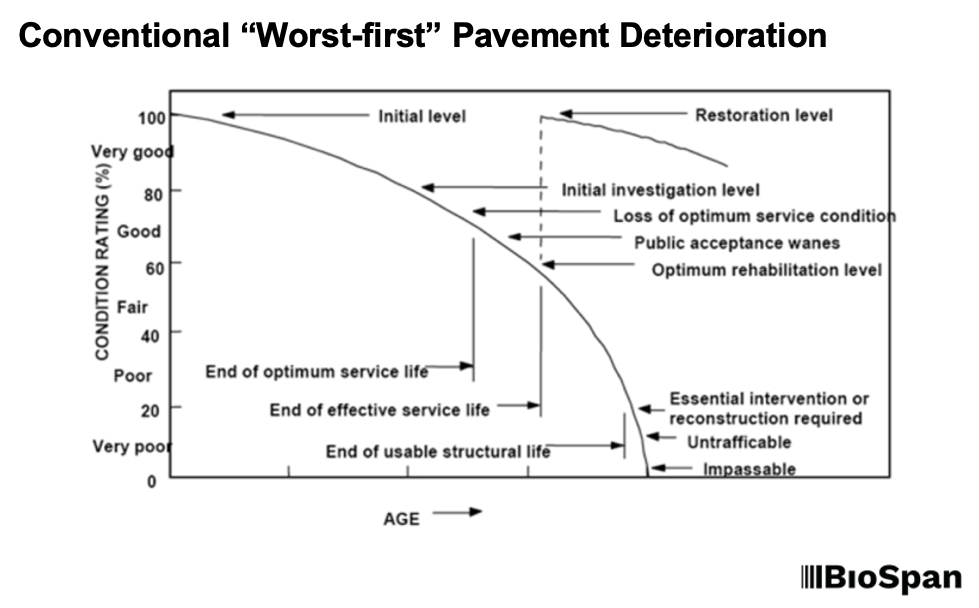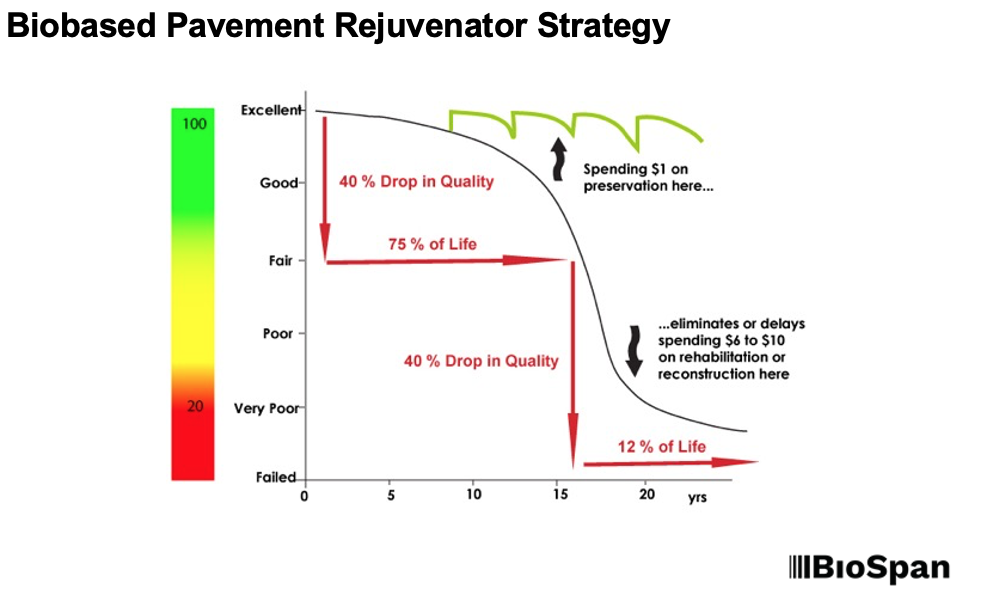When it comes to managing infrastructure, too many agencies and property owners treat pavement preservation as an afterthought—only addressing problems when they become impossible to ignore. However, pavement maintenance should be Plan A, not Plan B. A proactive approach saves money, extends pavement life, and improves overall infrastructure sustainability.
The Pavement Deterioration Curve: A Lesson in Timing
Pavement doesn’t fail overnight. It follows a predictable deterioration curve, which shows that pavements in good condition degrade slowly at first, then rapidly decline once distress sets in. The key takeaway? Investing in preventive maintenance early in the curve significantly reduces lifecycle costs.

According to the Federal Highway Administration (FHWA), the cost to rehabilitate a road in poor condition is up to five times more expensive than applying preservation treatments when the pavement is still in good shape. This is because once cracks, oxidation, and water intrusion take hold, the underlying structure deteriorates, leading to costly repairs and even full reconstruction. Source: FHWA Pavement Preservation Guidelines
Pay Now or Pay More Later
Delaying pavement preservation is like skipping routine oil changes on a vehicle—eventually, small problems snowball into major failures. Here’s a breakdown of the financial benefits of staying ahead of the pavement deterioration curve:
- Preventive Maintenance (Plan A): Applying sealants, rejuvenators, and thin overlays at the right time can extend pavement life by 5-10 years at a fraction of the cost of major rehabilitation.
- Deferred Maintenance (Plan B): Waiting until roads are riddled with cracks, potholes, and base failures requires expensive overlays, milling, or complete reconstruction—costing taxpayers or property owners exponentially more.
Proactive Preservation is the Smart Investment

The most efficient pavement management strategy incorporates preventive maintenance as a core principle. Agencies and businesses that prioritize preservation see higher ROI on infrastructure investments and fewer disruptions due to extensive repairs.
By implementing treatments like bio-based sealants, rejuvenators, and crack sealing while pavements are still in good condition, asset managers can control costs, reduce carbon footprints, and improve safety. The best pavement management plan is one that prevents problems before they start.
Make pavement preservation Plan A—because waiting until it’s too late will always cost more.
Plan A for Asphalt: RePlay
Learn more about RePlay, our bio-based asphalt rejuvenator and preservation agent.
More DetailsPlan A for Concrete: OptiSeal
See how OptiSeal prevents concrete breakdown without harming people, plants or the environment.
More Details